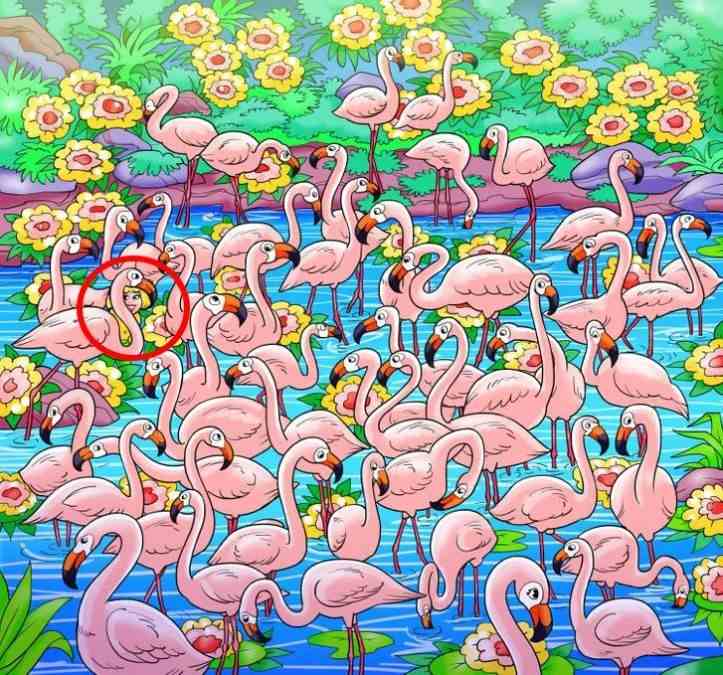Optical illusions are psychological experiments that are presented as visual tricks. When you attempt to solve for hidden objects or details in confusing images, the neural systems responsible for perception, observation, and memory are activated. Together, your prefrontal and visual cortex help you make sense of what you think you see, block out distractions, and uncover hidden patterns.
When your brain is overwhelmed with high visual chaos, your mind tries to fill in the blanks by drawing on prior experiences. This is often the reason why you fail to notice what is directly in front of you. Optical illusions are beneficial to strengthen your brain's capacity to block out unimportant information during highly stimulating experiences.
What if we told you this image isn't just a cute poster? It is a mental workout in disguise. Because let's agree that spotting a hidden girl among dozens of pink flamingos isn't child's play; it's a test of sharp observational skills under visual chaos. Are you ready to take the challenge?
Can you spot the girl hidden among flamingos?

Image: Brightside
A girl is hiding among these flamingos. Yes, and your challenge is trickier than it looks because you will get only 5 seconds to spot her. Ready to flex your observational prowess?
Your eyes are being flooded with nearly identical shapes, shades, and patterns, but somewhere in this visual noise, your real quest begins.
Brain Teaser IQ Test: Spot Who Is Hungry? Only 5 Seconds To Answer Correctly!
Can you ignore the visual noise and find the girl? Only 1 in 100 people can identify the hidden details in such overpowering images with so much going on.
You have excellent observation skills if you can identify the girl concealed among the flamingos in five seconds or less. You are more adept than the typical person at ignoring distractions.
Answer revealed!

Image: Brightside
You May Also Like...
NYT Connections Hints May 8 2025: Check Clues and Answers to Solve Today’s Puzzle Game
Your Favourite Coffee Reveals Your Hidden Personality Traits
Comments
All Comments (0)
Join the conversation